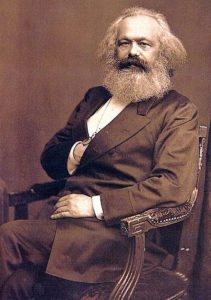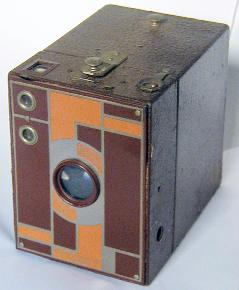There’s been a lot of commotion about the Rochester Photonics Center lately — from everyone who would never directly benefit from a Rochester Photonics Center. The center is a federal government initiative in which the means of production of photonics innovations would be owned and organized by the state.

In case you’d like to hear an opinion from a photonics professional for a change, read on!
First, a little about my credentials and background. I’m originally from Rochester, NY, I hold an applied physics degree with a concentration in applied optics, and I’ve worked in multiple industries centered around optics and photonics. Back in the day, I thought it would be smart to focus on optics in my studies so that I could return to Rochester and land an awesome job. (Also, optics is really cool.) I say “return” because I did not study at UR or RIT – their programs were not thorough enough for what I wanted to pursue. Instead, I packed my bags for the very frightening, crime and crack whore filled city of Flint, Michigan, which was home to Kettering University (formerly General Motors Institute) and the most rigorous applied physics program in the nation.
Upon graduation, I was days away from a likely hire at Xerox in Rochester when a hiring freeze crashed my employment hopes. It took several nerve-racking months of searching, starving and paying student loans before I miraculously landed a dream job at Leuze electronic, Inc. My time there would be split between Fairport, NY and Germany and it was a truly amazing opportunity in many ways. After only a year and a half, I was hit by the Great Recession’s second wave and was laid-off. Then came 2.5 more torturous years of searching, starving and paying student loans. Since that time, I’ve hopped around to different temporary situations, but never worked again in Rochester. I’m currently on a sabbatical, in which I’ve been travelling the world, but soon will be back to searching and starving — I never stopped paying those student loans.
This brings us to now, when every time I turn around, Rochesterians are asking me how excited I am about the Rochester Photonics Center. They tell me for sure I should be able to find a job in the city I’m from now. My friend’s father asked for my thoughts on the center, but before I had a chance to answer, he said, “a part of me, though, thinks this is just another Fast Ferry”.
BINGO, sir.
The Fast Ferry, to those who are not familiar, was a multi-million dollar sink hole back when politicians thought they should use public funds to become pioneers of industry. The ferry ran for a short time between Toronto and Rochester and was hoped to bring tourism dollars to Rochester. I remember learning about the ferry proposal in Mr. Pete’s Participation in Government (P.I.G.) class at Greece Olympia. Most of us pupils were not old enough to vote during the previous election, but hearing about the heedless use of taxpayer dollars made us wish we had been. Out of the mouths of babes, came: “Why the hell would Canadians want to come to Rochester?” Indeed. They didn’t. And the Fast Ferry racked up even more expenses than was anticipated and had to be sold.

So today, instead of a ferry, we have a much more expensive $600 million photonics center in the works. It’s thought it will “create jobs” and “spur US competitiveness”. Let’s get something straight, here. Governments do not champion job creation and industry competitiveness, unless the government we’re talking about is Russia. Governments are blamed and praised too often for the directrise and fall of economic states. Governments should be thought of more like farmers than God. Farmers do not create. Farmers do not squat in the earth and say, “ok now, let’s make a grape”, and pop out seeds from their earthly bodies. Of course, farmers cultivate conditions that allow crops to grow well – soil, shade, temperature, irrigation, etc. This is what good governments should do, as well, except those conditions are more like: lead-free water supplies, smooth roads, a trustworthy legal system, low crime rates, good schools, reasonable tax rates.
I hear some of you saying, well, why not? Governments can harness the collective buying power of many, many citizens. Why shouldn’t governments do more to directly grow industries?
Because they are complete shit at it. See Fast Ferry.
And I hear some others saying, but Rochester is, “the optics capital of the world”. I’m sorry, but, no it’s not. I don’t say that merely because I haven’t worked here in 8 years and didn’t get my degree here. I say that because I have a very keen grasp of photonics industries in the US as an active job seeker. At one point, YES, Rochester was not just arguably the optics capital of the world, but also the nation’s birthplace of optical science. At that time, Rochester was home to thriving versions of Kodak and Bausch and Lomb. This is not coincidental, by the way, but causal.
So where is the optics capital of the world? Well, if we’re talking groundbreaking photonics innovations directly headed by companies expecting to make a direct profit, that’s: Oculus, HoloLens, GoPro, Project Aura, secret projects at Amazon labs, industry-leading semiconductor processing, smart contact lenses, industrial laser development, 2D and 3D display technologies, and self-driving cars, then that’s the West Coast from Southern California to Seattle. There’s also all optics things automotive centered in the Mid-West. New England, far outside Rochester, houses established medical optics tech and fiber optic companies.
What Rochester has, in contrast, is the yet #1 optics program of study in the US – at University of Rochester’s Institute of Optics, and a handful of excellent optical component manufacturing facilities. Sadly, though, these things are remnants of when Rochester held the optics crown, not proof she is still reigning queen.
Let’s go back to the roots of optics in Rochester to understand this situation from the opposite end – how do regions successfully become pillars of industry? Which thing is chicken and which thing is egg?
By the mid-1800’s, Rochester was already a bustling and growing city. Three impressive waterways helped to get it there which acted as both power/flour-milling source and vital transportation ways – Lake Ontario, the Genesee River, and of course, the Erie Canal. After the Flour City days, there was an ever-increasing population, fertile farms to feed that population, and still the excellent transportation pathways to import raw materials and export finished goods. This was a ground fertile for industrialization and a few wildly successful entrepreneurs knew it: George Eastman, John Jacob and Henry Lomb, a.k.a. the founders of Eastman Kodak Company and Bausch and Lomb. Photographic cameras and mass-produced optics were some of the most high-tech wizardry you could get before the turn of the century.

Then what? Well, then those companies got together and gave the University of Rochester a ginormous grant so it would create the first optics study program in the United States. This was hardly a purely philanthropic gesture, by the way. Kodak and B&L needed optical science and scientists to continue to grow and stay competitive. The UofR was capable of providing those things in their backyard. This was in reality, a private economic transaction; it was supply and demand.
Notice, the story doesn’t go, “then the politicians of the city of Rochester got together and decided to force economic and educational prosperity upon circumstance”.
After Kodak and B&L came Xerox, and all the optics component suppliers that sprung up to drink from those larger entrepreneurial successes. Then Kodak withered, as did B&L. Lay-offs, lay-offs, bankruptcies, lay-offs. The Institute of Optics still remains, as do many fine component manufacturers. However, tier 1 optics suppliers are now springing up on the West Coast to feed off the aforementioned new, true photonic innovations center of the world. When I worked in the mid-West, I would sometimes attempt to have a Rochesterian optical manufacturer produce or finish a component I designed, but every time, although the quality may have been better, they were unable to compete with cost, timing and even customer service. The optics suppliers that are forming in this new wave of photonics innovation, are built very differently for different customers. They offer quick turn-around, even higher tech in-house engineering capabilities, and altogether different products – instead of basic lenses, mirrors and coatings, they specialize in display, projection, light guide and smart sensor technologies.
That explains why I think trying to force Rochester into national photonics leader status won’t work, but it doesn’t explain why I think it’s a terrible idea. The terrible part comes foremost from the bushels of wasted taxpayer dollars being flushed away. $600 million is the price tag thrown around in the news, with a large chunk coming from federal tax dollars and at least $200 million coming directly from New York State tax payers.
These dollar figures are high, but the economic development initiatives totaling 4 BILLION DOLLARS for New York State as a whole are even worse. To most working class lackeys, these numbers all just sound really big. So, as an aside putting this into context, I want to tell you about the suspenseful Nokia Here deal which I followed very closely last year. Nokia was selling off its division which created really excellent maps primarily for automobile navigation systems. This is the data a pre-installed navigation system in your car would run off – the car version of Google Maps. It may not seem like a big deal to the consumer, but this software is pivotal for the evolution of the automotive industry. Think the development of self-driving cars and increased integration of all things Internets (the “IoT”). Nokia was selling this software as a product to car manufacturers but wanted to get rid of the company. Uber was very interested, but if Uber bought it, there’s no way they would allow car manufacturers to continue leasing the software. This made the Big 3 of German auto manufacturers – Daimler, BMW and Volkswagen – freak out and band together to try to buy it. The course and rate of progress of the entire automotive industry hung in the balance. If Uber bought the software and if Google and Apple and Tesla became very successful with their innovations, traditional manufacturers might be completely obsoleted in the future. The fates of those German car companies were on the line. Together, across those 3 hugely successful, high-valued companies, the Germans came up with2 billion dollars to save their future. Then it looked like Uber would offer $3 billion. Then the German companies laughed and said they’d rather let their children starve than pay more than $3 billion for the imperative technology. Then Uber backed out and the Germans coughed up $3 billion. Note, that’s an average $1 billion per hugely successful manufacturer. AND THEN YOU HAVE NEW YORK STATE, which sneezes and out falls 4 BILLION DOLLARS. BMW was like, “oh we’ve had a good run, if it takes more than $1 billion let’s let it burn to the ground, cuz it’s not worth it”, and NYS tosses FOUR billion haphazardly at “economic stuff and things”. For more information on this bigger problem, see WHEC’s mini-investigation here: http://www.whec.com/nys-exposed/risky-business-investments/4116482/
So back to the Rochester Photonics Center – it’s a lot of money. Ok, got it. What else? Well, it also is on the periphery of federal and state probes regarding potential financial impropriety in all these economic initiatives. Awesome! I’m pretty sure that didn’t happen when George Eastman threw money directly at UR to buy some optical engineers. Then there’s the public pissing contest about where the center should be located. Again, I’m pretty sure Bausch and Lomb didn’t arm wrestle with UR over locations when the Institute of Optics was being built because they were busy building telescopes.
The worst part of all has got to be the fact that most of the key players in this initiative do not have a direct benefit to gain unless something improper is happening. I’m not suggesting there necessarily is anything improper going on with all the parties, only that it makes no economic sense and thus is proof of wasted funds. What does Paychex need with advanced manufacturing methods for OLEDs? How many more gallons of milk per year will Wegmans sell if Rochester creates a spiffy semiconductor clean room?
I mean, just take a look at the guys at the AIM Photonics Hub inaugural meeting on the aimphotonics.com website: http://static1.squarespace.com/static/55ae48f4e4b0d98862c1d3c7/t/55f19131e4b03583c0bf28b5/1441894706475/?format=1500w Do they look like highly capable, technology and science visionaries to you? But, really now, really.
Tom Battley, the executive director of New York Photonics, was quoted by the D&C as saying, “this is as important to Rochester as when George Eastman donated $30 million to the University of Rochester“. Mr. Battley, I wish that were true, but I really don’t think this is like that time at all.

